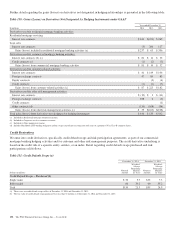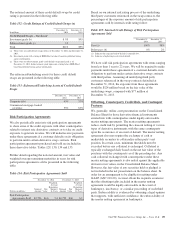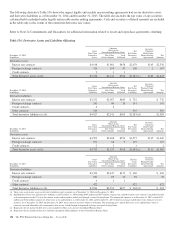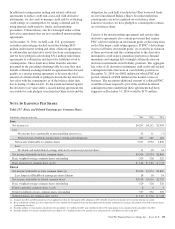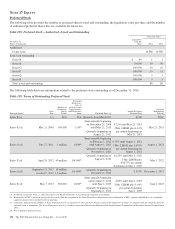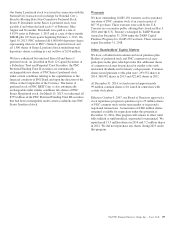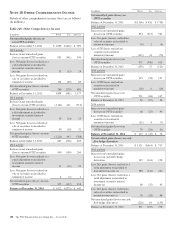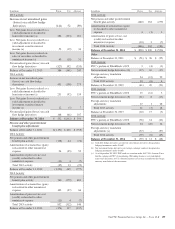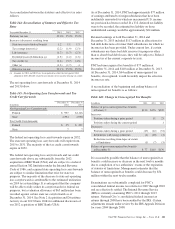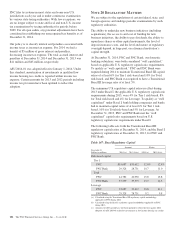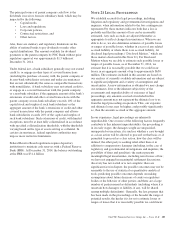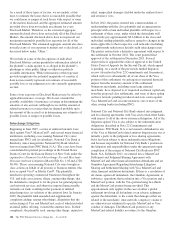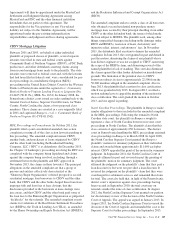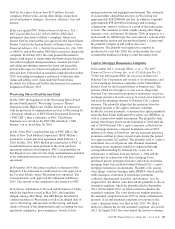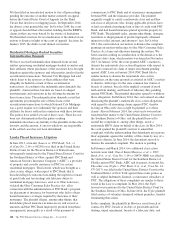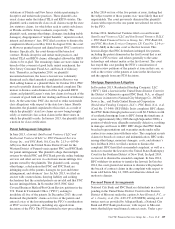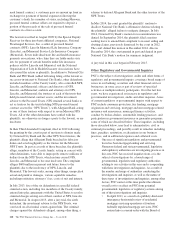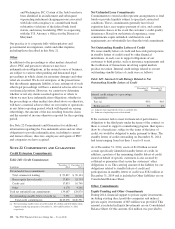PNC Bank 2014 Annual Report Download - page 220
Download and view the complete annual report
Please find page 220 of the 2014 PNC Bank annual report below. You can navigate through the pages in the report by either clicking on the pages listed below, or by using the keyword search tool below to find specific information within the annual report.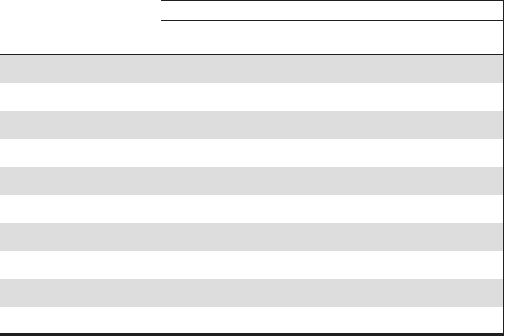
PNC files tax returns in most states and some non-U.S.
jurisdictions each year and is under continuous examination
by various state taxing authorities. With few exceptions, we
are no longer subject to state and local and non-U.S. income
tax examinations by taxing authorities for periods before
2009. For all open audits, any potential adjustments have been
considered in establishing our unrecognized tax benefits as of
December 31, 2014.
Our policy is to classify interest and penalties associated with
income taxes as income tax expense. For 2014, we had a
benefit of $5 million of gross interest and penalties,
decreasing income tax expense. The total accrued interest and
penalties at December 31, 2014 and December 31, 2013 was
$41 million and $45 million, respectively.
ASU 2014-01 was adopted effective January 1, 2014. Under
this standard, amortization of investments in qualified low
income housing tax credits is reported within income tax
expense. Certain amounts for 2013 and 2012 periods including
income tax provision have been updated to reflect the
adoption.
N
OTE
20 R
EGULATORY
M
ATTERS
We are subject to the regulations of certain federal, state, and
foreign agencies and undergo periodic examinations by such
regulatory authorities.
The ability to undertake new business initiatives (including
acquisitions), the access to and cost of funding for new
business initiatives, the ability to pay dividends, the ability to
repurchase shares or other capital instruments, the level of
deposit insurance costs, and the level and nature of regulatory
oversight depend, in large part, on a financial institution’s
capital strength.
At December 31, 2014, PNC and PNC Bank, our domestic
banking subsidiary, were both considered “well capitalized,”
based on applicable U.S. regulatory capital ratio requirements.
To qualify as “well capitalized,” PNC and PNC Bank were
required during 2014 to maintain Transitional Basel III capital
ratios of at least 6% for Tier 1 risk-based and 10% for Total
risk-based, and PNC Bank was required to have a Transitional
Basel III leverage ratio of at least 5%.
The minimum U.S. regulatory capital ratios in effect during
2013 under Basel I, the applicable U.S. regulatory capital ratio
requirements during 2013, were 4% for Tier 1 risk-based, 8%
for Total risk-based and 4% for Leverage. To qualify as “well
capitalized” under Basel I, bank holding companies and banks
had to maintain capital ratios of at least 6% for Tier 1 risk-
based, 10% for Total risk-based and 5% for Leverage. At
December 31, 2013, PNC and PNC Bank met the “well
capitalized” capital ratio requirements based on U.S.
regulatory capital ratio requirements under Basel I.
The following table sets forth the Transitional Basel III
regulatory capital ratios at December 31, 2014, and the Basel I
regulatory capital ratios at December 31, 2013, for PNC and
PNC Bank.
Table 147: Basel Regulatory Capital
Amount Ratios
December 31
Dollars in millions 2014 (a) 2013 (b)(c) 2014 (a) 2013 (b)(c)
Risk-based capital
Tier 1
PNC $35,687 $33,612 12.6% 12.4%
PNC Bank 29,328 28,731 10.7 11.0
Total
PNC 44,782 42,950 15.8 15.8
PNC Bank 37,559 37,575 13.7 14.3
Leverage
PNC 35,687 33,612 10.8 11.1
PNC Bank 29,328 28,731 9.2 9.8
(a) Calculated using the Transitional Basel III regulatory capital methodology
applicable to PNC during 2014.
(b) Calculated using the Basel I regulatory capital methodology applicable to PNC
during 2013.
(c) Amounts for 2013 period have not been updated to reflect the first quarter 2014
adoption of ASU 2014-01 related to investments in low income housing tax credits.
202 The PNC Financial Services Group, Inc. – Form 10-K


